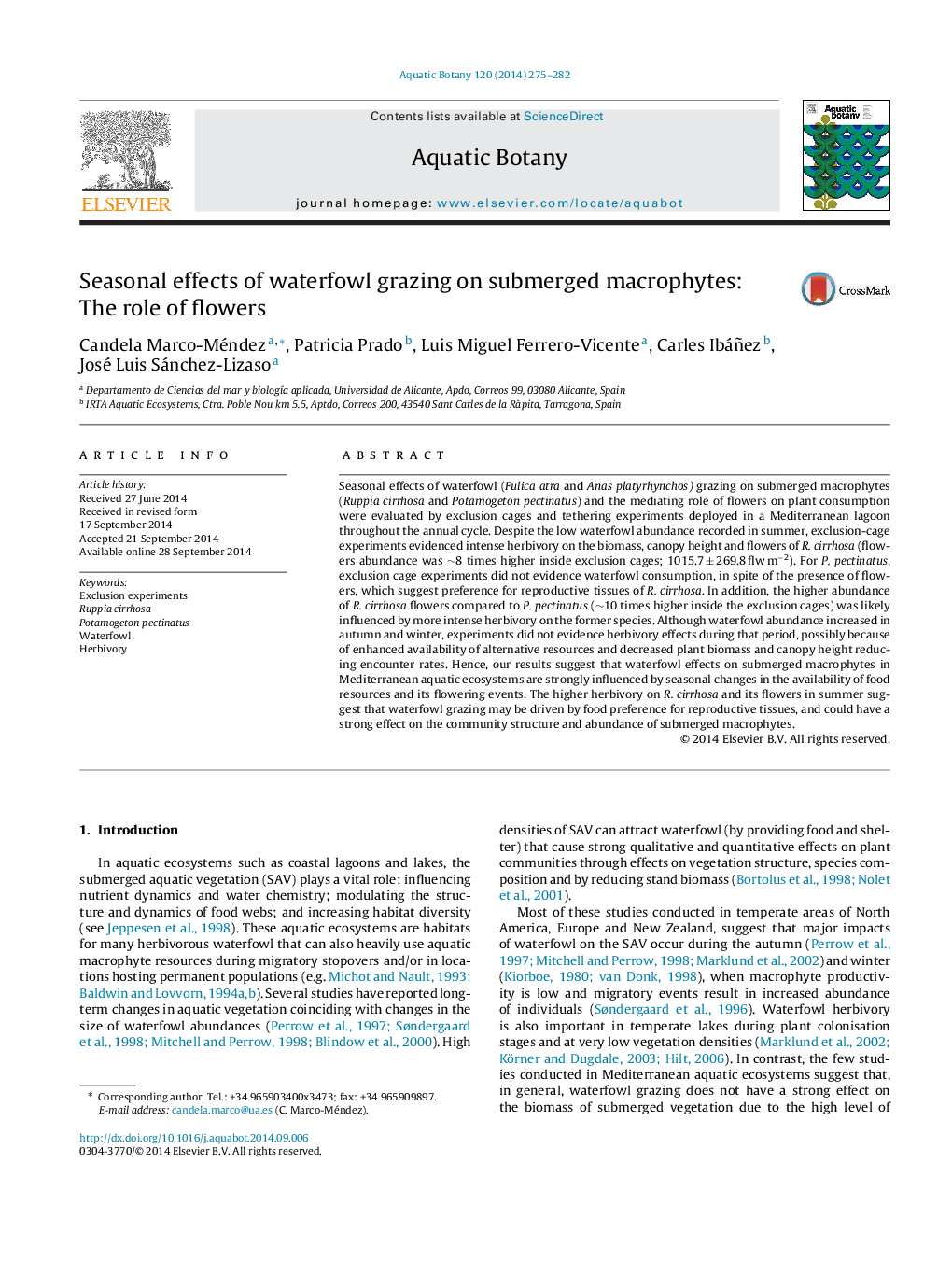| کد مقاله | کد نشریه | سال انتشار | مقاله انگلیسی | نسخه تمام متن |
|---|---|---|---|---|
| 4527713 | 1625822 | 2015 | 8 صفحه PDF | دانلود رایگان |
• Waterfowl abundance increased from summer to winter.
• Significant herbivore effects on macrophyte biomass were only found for one macrophyte species (Ruppia cirrhosa) and only in summer.
• High flower abundance may have facilitated herbivory.
Seasonal effects of waterfowl (Fulica atra and Anas platyrhynchos) grazing on submerged macrophytes (Ruppia cirrhosa and Potamogeton pectinatus) and the mediating role of flowers on plant consumption were evaluated by exclusion cages and tethering experiments deployed in a Mediterranean lagoon throughout the annual cycle. Despite the low waterfowl abundance recorded in summer, exclusion-cage experiments evidenced intense herbivory on the biomass, canopy height and flowers of R. cirrhosa (flowers abundance was ∼8 times higher inside exclusion cages; 1015.7 ± 269.8 flw m−2). For P. pectinatus, exclusion cage experiments did not evidence waterfowl consumption, in spite of the presence of flowers, which suggest preference for reproductive tissues of R. cirrhosa. In addition, the higher abundance of R. cirrhosa flowers compared to P. pectinatus (∼10 times higher inside the exclusion cages) was likely influenced by more intense herbivory on the former species. Although waterfowl abundance increased in autumn and winter, experiments did not evidence herbivory effects during that period, possibly because of enhanced availability of alternative resources and decreased plant biomass and canopy height reducing encounter rates. Hence, our results suggest that waterfowl effects on submerged macrophytes in Mediterranean aquatic ecosystems are strongly influenced by seasonal changes in the availability of food resources and its flowering events. The higher herbivory on R. cirrhosa and its flowers in summer suggest that waterfowl grazing may be driven by food preference for reproductive tissues, and could have a strong effect on the community structure and abundance of submerged macrophytes.
Journal: Aquatic Botany - Volume 120, Part B, January 2015, Pages 275–282
